The current divider rule is used to find the current in the individual circuit when two or more circuit elements are connected in parallel with a current source.
When the current source is connected to the circuit elements which are in parallel, the total current flowing in the circuit gets divided in each element according to the resistance or impedance of the circuit element. Thus, the current is divided into all the branches. The voltage across each branch element remains the same because these elements are connected in parallel.
Current Divider Formula Derivation
The current division or current divider rule can be well understood with the following explanation.
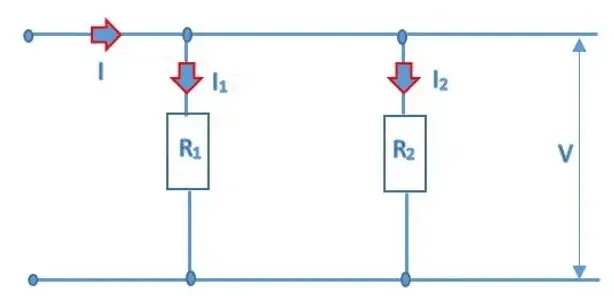
The current through R1 and R2 Resistance can be calculated using Ohm’s law;
Current through resistance R1

Current through resistance R2

The total equivalent resistance of the parallel circuit is R

The total current flowing in the circuit is I ;
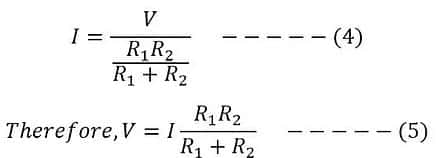
Putting the value of V in equation (1) we get;
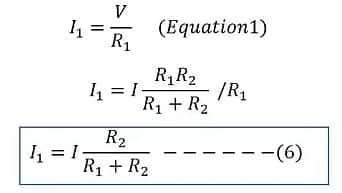
Putting the value of V in equation (2) we get;
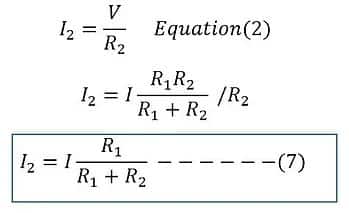
Current Divider Formula
Thus, the current in the parallel branch is equal to the ratio of the opposite branch resistance to the total resistance multiplied by the total circuit current. The current divider formula is given below.

Illustrative Example on Current Divider Rule :
Two resistances 50Ω and 100Ω are connected in parallel with a current source of 50A. Find the current flow through each resistor.


Current through 50 Ω resistance is I1
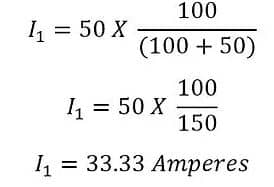
Current through 100 Ω resistance is I2
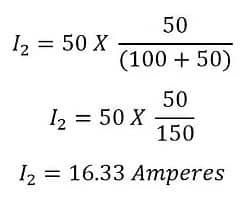
Note:
The current divider rule is used when two or more circuit elements are connected in parallel with a current source.
When two or more circuit elements are connected in parallel with a voltage source, the current in each branch can be calculated by simply applying Ohm’s law because the voltage across each circuit element is the same, and by dividing the voltage with branch resistance, the current in the branch can be easily calculated.